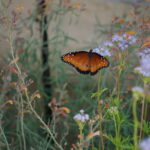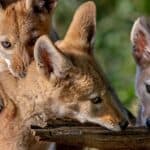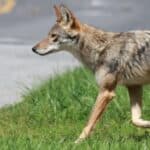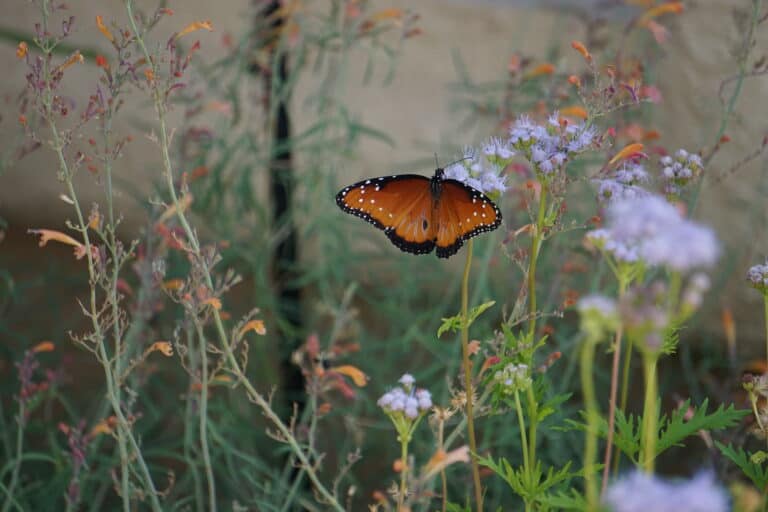Notes From The Field Blog Interview with Larry Taylor, #CaptureCoexistence Contributor, by Kristen Weiss, Project Coyote Public Engagement Coordinator
I recently spoke with biology professor and wildlife photographer Larry Taylor about his career path and why he was inspired to join Project Coyote’s #CaptureCoexistence Campaign. The Project Coyote team continues to be blown away by the talent and dedication of our Capture Coexistence Contributors, and Larry Taylor is no exception. A biology professor “by day”, Larry photographs wildlife in Yellowstone and Glacier National Parks nearly every weekend. He has spent so much time in the park that he has come to know many individual animals and follow them throughout their lives, documenting some incredible moments through his photos.
It was an honor to speak with Larry about his combined passions for science, photography, and wildlife conservation. Not only are his images of coyotes, bears, wolves, and other wildlife breathtaking, but they also capture the rich stories of each animal. Larry’s journey, from being mesmerized by the nighttime howls of coyotes as a child, to pursuing a degree in science, to eventually finding greater connection with wildlife through photography, resonated with my own life path. I appreciated our thoughtful discussion about the intersection of science, ethics, advocacy, passion, and recognition of animal sentience.
As Larry learned during graduate school, biologists understandably have to keep a distance from the animals they study—often identifying them only by numbers or descriptors. While scientific rigor is important, the approach often leads to a focus on population or species level characterizations. In the process, individual animals, with their unique personalities, emotions, tendencies, and agency, may be ignored. Through photography, Larry has been able to connect with animals at a personal level, and recognize them for the individuals they are—and incorporate his many animal encounter stories into his university lectures.
I hope you’ll find Larry’s dedication to wild lives as inspiring as I do. We are grateful for his participation in our campaign to end Wildlife Killing Contests, and for using his beautiful photography to give us a window into the lives of so many remarkable animals.
Here’s to a future built on compassionate coexistence!
Kristen Weiss, Project Coyote Public Engagement Coordinator
Kristen: Tell us about your wildlife photography journey.
Larry: I’ve been a wildlife photographer for four years now. As a kid, there were only two jobs I ever considered. One was a paleontologist. I got my doctorate in paleontology, so I can check that one off the list. The other was wildlife photography. After finishing my doctorate, I was looking for jobs based partly on location. Now that I live in Helena, Montana, I’m about three hours from Yellowstone National Park. I spend roughly one hundred days out of the year in Yellowstone. I’ve been living out my childhood dream. I could do this every day for the rest of my life and it still wouldn’t be enough time.
Coyotes were the only animal with a hint of wildness where I grew up in East Texas. There were deer, but no bears, cougars or other wild carnivores. I grew up listening to the coyotes every night, and they fascinated me. But they were almost like ghosts, I never saw them. They were shy and reclusive in the dense forest, but you heard them all the time.
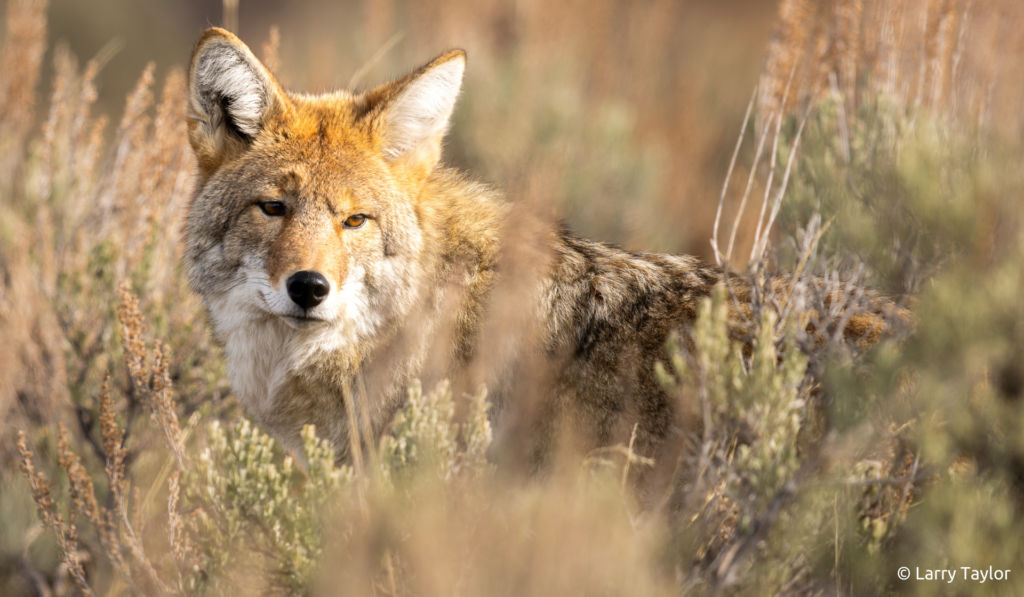
I came to Montana chasing wildness — the grizzlies, wolves, moose — but as it turns out I’ve been absolutely transfixed by the coyotes, following many of their individual lives for years.
When I first started doing photography, I wanted to get the nice portrait, have the animal facing me, and all that. But more and more, my photography is focused on trying to capture a story — a series of photographs in an animal’s life, where I’m capturing major moments. Occasionally you get that one photo that tells a story all in itself, and that’s what I really go for now. I’m interested in documenting these moments, these stories, that draw people in.
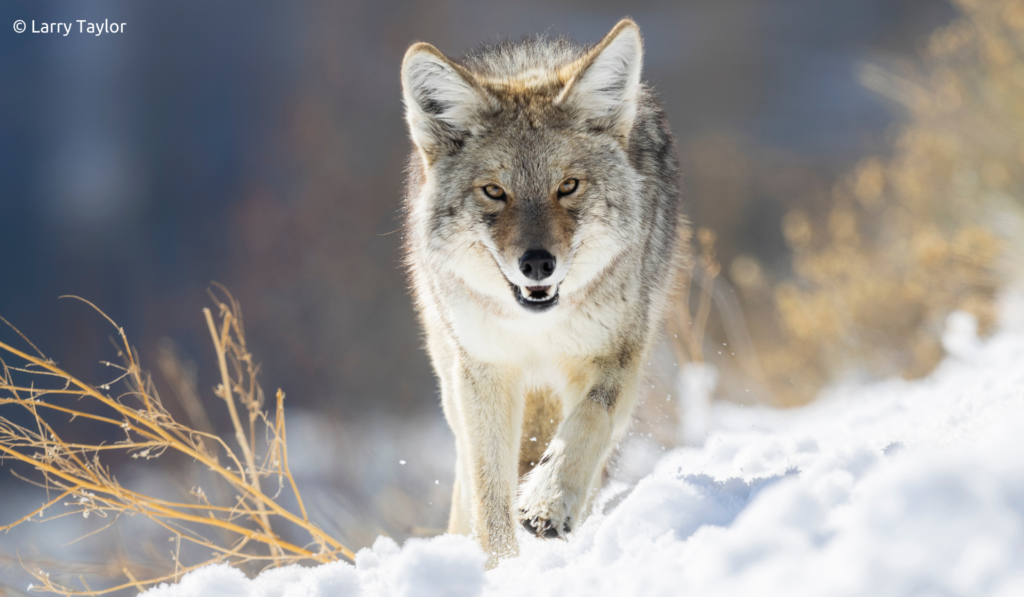
Kristen: What gear do you typically use in the field?
I have a Canon r5 camera that I’m very fond of. It has great autofocus, it’s great for wildlife. And I am in love with my Canon L series 600mm F4 prime lens. That is the lens I use for the vast majority of my photography. I protect it like a child. There was one time I slipped on some ice and I knew it was going to hurt – but I was ready to sacrifice my lower back before I let the lens hit the ground. I was bruised for a few weeks, but the lens was fine, thankfully!
Kristen: How has being a biologist influenced your photography (or vice versa)?
Larry: Being a biologist has helped me be very meticulous with my notes about what I see, where and when I see it, and what was happening at the time, all of which has made me a better photographer. I’ve gotten used to tracking animals and their movement and patterns so I know where to find animals and to anticipate their behaviors. However, studying biology also meant that I spent years thinking of animals at the species and population levels.
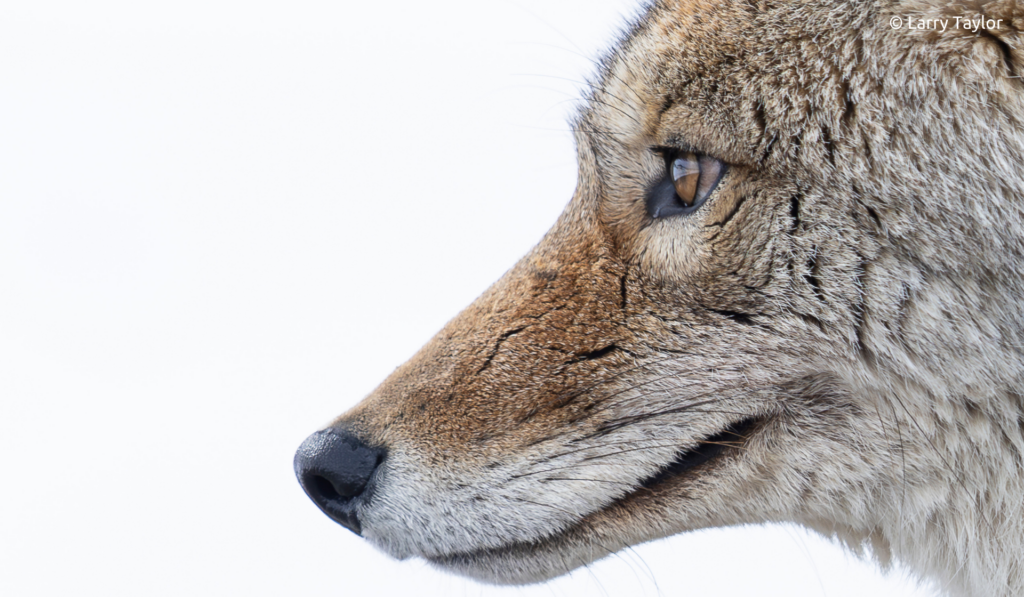
When I first came to Yellowstone I was a little more removed, and had kind of lost sight of the individuals. I ignored the common nicknames given to some of the well known resident animals. But then after a while I watched them so much, whether they were grizzlies or coyotes, that I came to know each of them, and it felt weird to keep a distance, because it was robbing the animals of their unique personalities. Being objective is important in science, but when I’m photographing I’m not actively being a scientist. I can see the animals as individuals.
Kristen: What are some of the more remarkable animal encounters you’ve experienced?
Larry: Every Monday when I teach my biology class, my students expect to see photos from Yellowstone. There is a particular coyote that has a fan base on my campus. I’ve been following him for four years now, and he’s a remarkable old man. When he went missing for a few months, people came up to me in tears, worried about whether he was okay. But he is still alive. When I first spotted him four years ago, he had a terrible leg injury. Everyone assumed he wouldn’t make it; he was really thin and limping. But I kept seeing him, and he kept hanging on. He would hunt snakes because they were slow enough to catch. I also saw him hunt with a badger several times, for hours each time. He would pick a spot, and the badger would dig. Eventually, this coyote started putting on weight, and his leg started to get better. Flash forward to now, and this guy is the healthiest looking coyote in the park. He’s gorgeous. He still has a little bit of a limp, but he can use the leg, even run on it. I’ve seen him catch three prairie dogs in ten minutes.
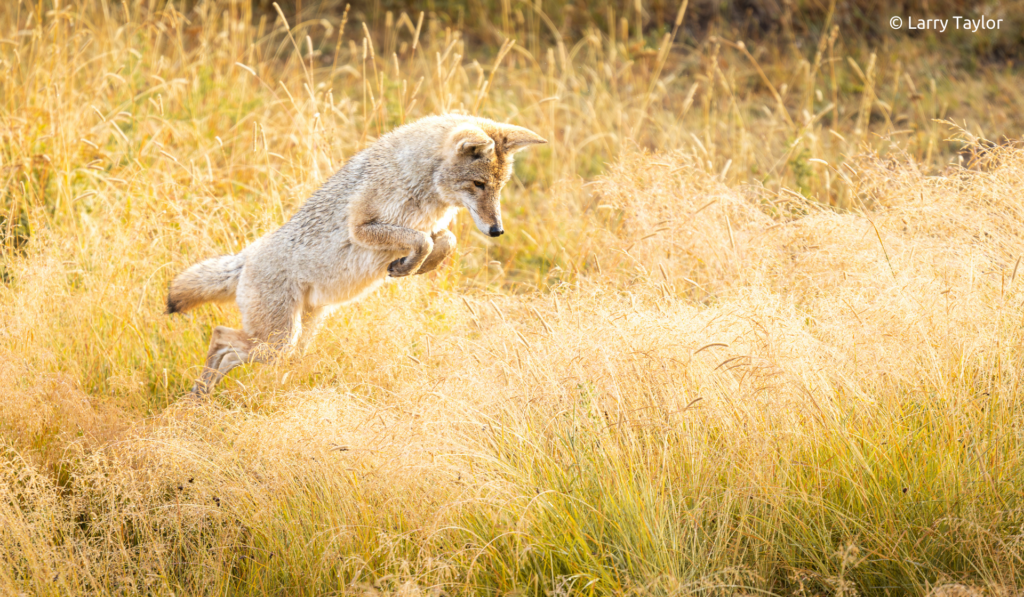
I know where this coyote likes to hunt, and where he likes to nap. He really likes to watch sunsets. No matter what he’s doing, hunting usually, he’ll just stop and stare at the sky at dusk while it’s really colorful. Then he’ll go back to doing his thing. Maybe he’s watching the sunset for the same reason we do. That sticks out to me. He’s had an incredible life and displayed so many different emotions.
There’s also a grizzly bear mom in the park named Raspberry. Most grizzlies prompt their cubs to go off on their own after two years, but Rasberry keeps her cubs with her for three years. She seems to love being a mom. She’ll play with her cubs and pull them in for hugs all the time. Animals have individual personalities and lives, and those lives include all the basics that ours do: fear, anxiety, working hard to care for their offspring. I wonder if it’s subconscious that we sometimes avoid seeing wild animals like that because it makes it easier to treat animals the way we do; to not think that the wolf or coyote or bear has all the same emotions that our pet dogs do. Yet we accept very different ways of treating wild animals.
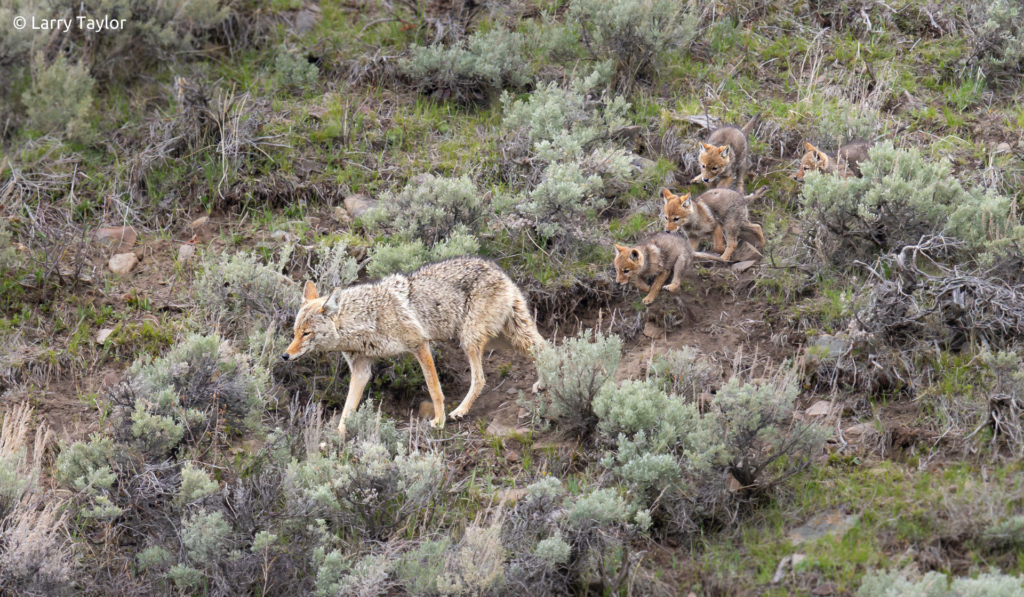
Another incredible experience I had doesn’t involve a large carnivore, but I’ll never forget it. Usually, ermine (also known as short-tailed weasels, very small carnivores averaging less than a foot long and a few inches tall) are notoriously difficult to photograph in winter, because their fur is white and they are in white snow, and they move incredibly fast. But one day I was driving through a canyon in Yellowstone, and to my left was this vertical wall, like fifty or sixty feet high. There were a couple long cracks going along the length of the wall, and something caught my eye. It turned out to be an ermine rock climbing up the vertical crack in the cliff. It was shimmying up towards a wood rat that was clinging to a tiny ledge high up. I have this single shot of the ermine where, for one second, it looked in my direction while it was spread eagle in the crack — just the most ridiculous thing! It couldn’t get to the rat, but it kept trying. When it got to the top of the crack, it would leap toward the rat, miss, fall thirty feet into the snow, and shimmy up the crack again. It repeated this at least a dozen times. It was unreal! Eventually other people noticed my lens, and a small crowd gathered to watch this ermine. It was like a miniature sporting event. Every time the ermine fell, there was a gasp, and every time it bounced back up, there were cheers. That was the craziest, most unique thing I’ve seen. I can one hundred percent say I’ll never see that again.
Kristen: What inspired you to join Project Coyote’s Capture Coexistence Campaign?
Larry: I had been following Project Coyote’s work for several years. I think I first heard about the organization while reading Coyote America by Dan Flores. When I learned about #CaptureCoexistence, I felt it was the perfect opportunity to offer my photos and stories. I’ve compiled such a massive log of coyote photos, and I hope that they can highlight the beauty of these animals and inspire people to get a sense of what they are truly like.
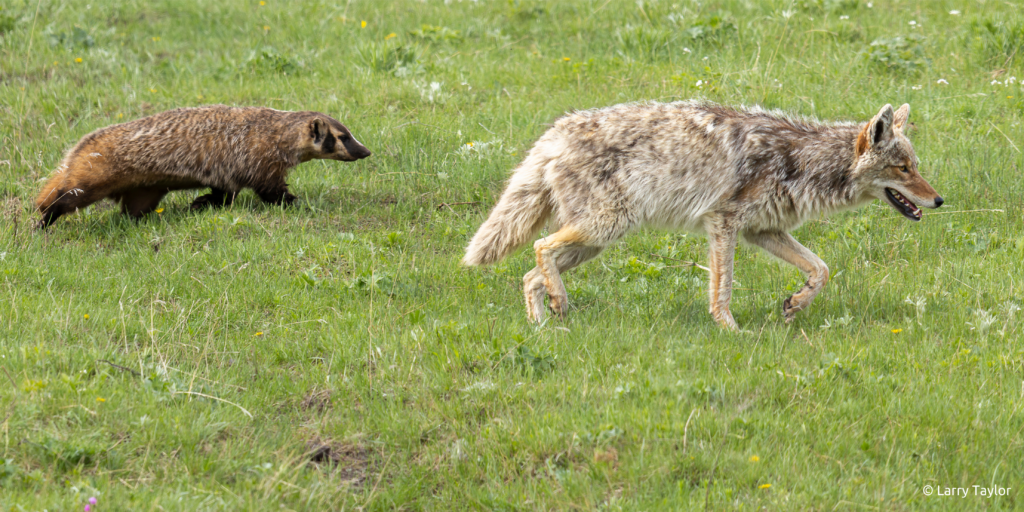
Coyotes are incredibly underappreciated. They combine the delicate finesse and beauty of a fox with a size closer to a wolf. They are so smart and adaptable and persistent, it blows my mind. Coyotes are an animal you can’t help but respect — we kill something like a half million of them a year and yet they keep thriving. I do not want future Americans to grow up in a place where we are ethically okay with killing animals for fun. And that’s what Wildlife Killing Contests are — killing things just to kill them. Millions of Americans don’t even know that killing contests exist, or the massive amounts of animals killed every year on public lands. I’m thrilled that I can participate in #CaptureCoexistence, because I have so much respect for what Project Coyote has been working toward over the last several years, and the progress they’ve made. They are an incredible organization.
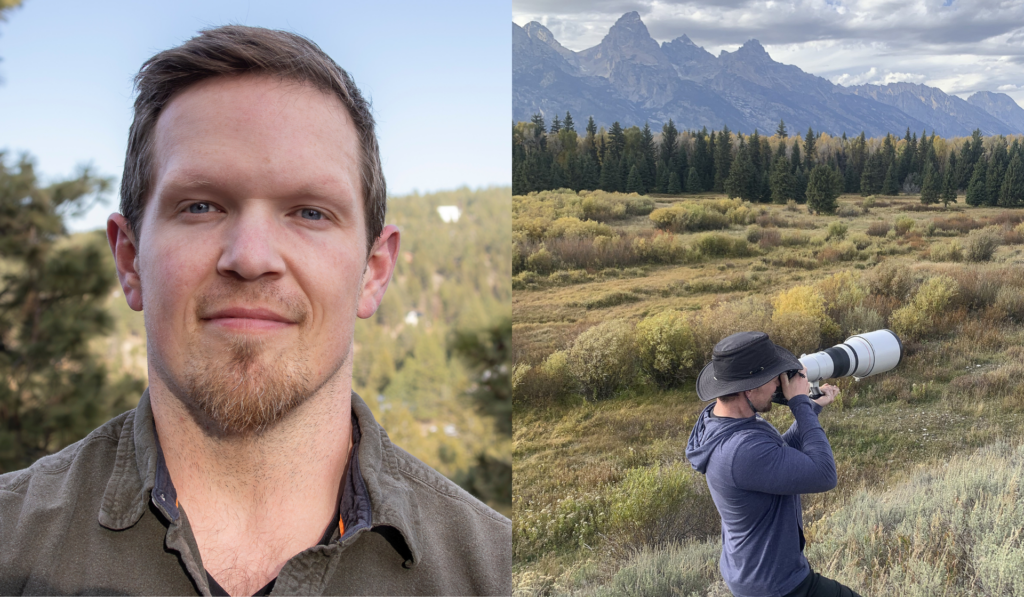
Larry Taylor is a biologist and biology professor at Helena College University of Montana. Larry completed his PhD in paleontology at University of California, Berkely, before moving to Montana, where he pursued the wilds through wildlife photography in the Northern Rocky Mountains region. Larry credits photography with connecting him to wild animals in a new, profound way, and allowing him to share his wonder with the world through his images.
.

